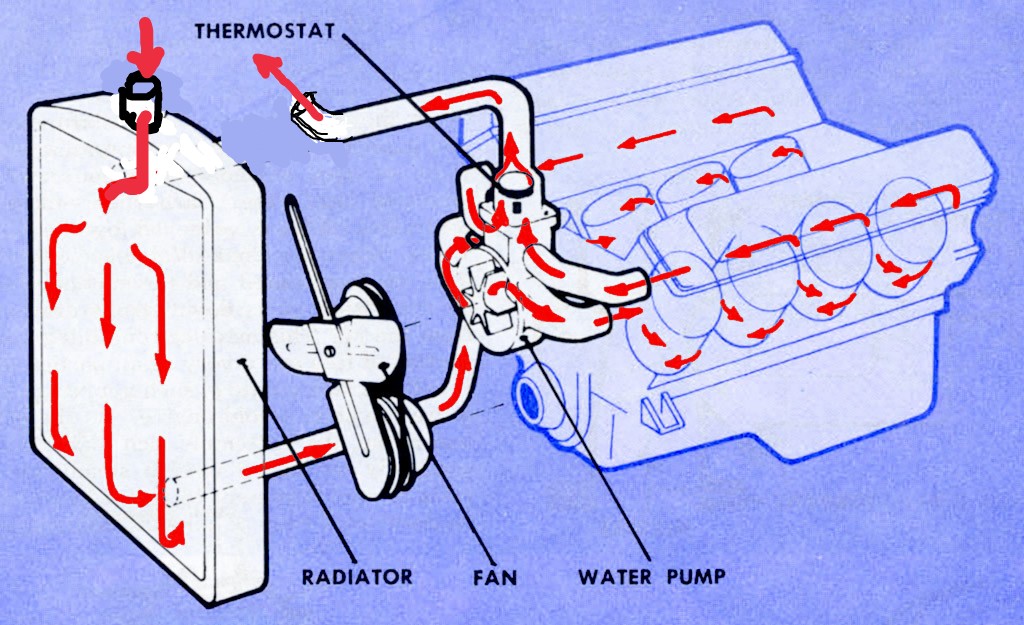My method for a complete and thorough flush.
1. Remove thermostat and reinstall the housing.
2. Disconnect
upper radiator hose from radiator and direct the flow coming out of the block towards ground.
3. Set car heater to MAX.
4. Make sure radiator is empty.
5. Add chemicals of mass destruction (your choice) to radiator.
6. Insert garden hose into radiator.
7. Start engine and wedge something in carburetor linkage so that it runs at a high idle.
8. Turn on garden hose so flow of water matches flow of water coning out of
upper radiator hose.
9. Run, run, run, until water coming out of
upper hose looks clean enough to drink.
10. Add small amt. of Tide laundry detergent to radiator.
11. Continue flushing process until soap coming out of hose is gone and water is crystal clear again.
Stop engine.
12. Install new thermostat (180° minimum) and gasket and
upper hose.
13. Drain radiator again andd A/F to radiator until full.
14. Restart engine and bring up to high idle again.
15. Purge system of air COMPLETELY, and add additional A/F as nec.
16. Dispose of dead animals who you indvertantly let drink the old antifreeze flowing down driveway.
Wash down driveway to remove evidence.
To divert the coolant coming out the upper hose away from you and the car, I found that a hose from a Shop Vac is the same size.

